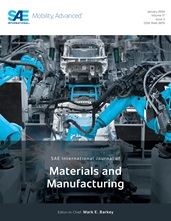Optimization of Abrasive Water Jet Machining of Al 6061-T6 Alloy Using Taguchi-Based Gray Relational Analysis-Coupled Principal Component Analysis Hybrid Approach
- Features
- Content
- Abrasive water jet (AWJ) machining is the most effective technology for processing various engineering materials particularly difficult-to-cut materials such as aluminum alloys, steels, brass, ceramics, composites, and the like. The present study focuses on the experimental study on surface roughness and kerf taper is carried out during AWJ machining of Al 6061-T6 alloy with 40 mm thickness, and the influence of process parameters includes water jet pressure, standoff distance, and abrasive flow rate on the kerf taper and surface roughness is analyzed. The number of experiments is designed using Taguchi’s L9 orthogonal array. Experimental results are statistically analyzed using ANOVA. Also gray relational analysis (GRA) coupled with principal component analysis (PCA) hybrid approach was implemented to optimize the performance parameters. From the results it is found that standoff distance and hydraulic jet pressure are the most influencing parameters on surface roughness and kerf taper.
- Pages
- 17
- Citation
- Kolluri, S., Srikanth, V., Ismail, S., and Bhanu, C., "Optimization of Abrasive Water Jet Machining of Al 6061-T6 Alloy Using Taguchi-Based Gray Relational Analysis-Coupled Principal Component Analysis Hybrid Approach," SAE Int. J. Mater. Manf. 18(3), 2025, https://doi.org/10.4271/05-18-03-0023.
